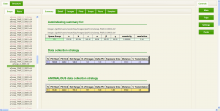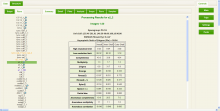Auto-Indexing
RAPD is able to recognize the collection of either diffraction snapshots (often used to screen macromolecular crystals prior to data collection) or the collection of diffraction data sets. In the case of snapshots, RAPD utilizes the programs DISTL, Labelit, Raddose, and BEST to provide an indexing solution and data collection strategies of that particular crystal.


